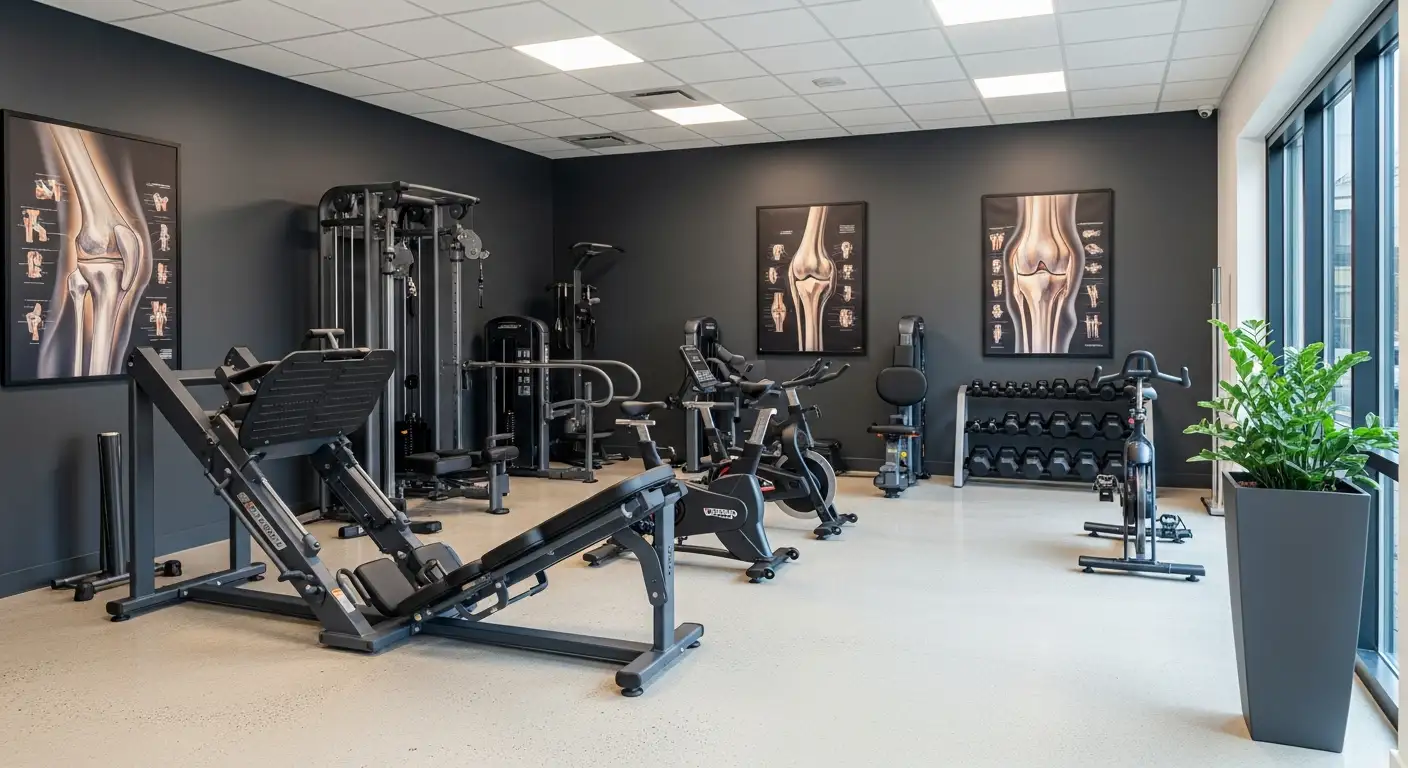Recovery Timeline After Knee Surgery
Understanding the recovery timeline after knee surgery is crucial for patients who are planning to undergo or have recently undergone the procedure. This timeline can vary based on the type of surgery, the patient's overall health, and the rehabilitation program. Here, we discuss some common milestones in the recovery process, focusing on mobility, initiation of physical therapy, and care of surgical incisions.
Walking and Driving Post-Surgery
One of the first milestones after surgery is regaining mobility. After total knee replacement (TKR) surgery, patients can usually walk without an assistive device after about three weeks. The progression to using a cane or no assistive device typically occurs around 2–3 weeks post-surgery. As for driving, it is generally safe to resume this activity 4–6 weeks after surgery, depending on the individual's comfort and mobility levels.
Physical Therapy Initiation
Physical therapy is a crucial component of recovery after knee surgery. According to Healthline, patients may start physical therapy within the first 24 hours after surgery. This early initiation helps patients get back to their regular activities faster.

Physical therapy typically begins immediately after the surgery while in the hospital and continues for a few weeks at home before transitioning to a clinic or facility [2]. Some institutions, like the Hospital for Special Surgery, also offer virtual physical therapy options, especially during times like the COVID-19 pandemic.
Incision Care Guidelines
Proper care of the surgical incision is paramount to prevent complications such as infection. Patients are advised to avoid soaking their knee for 3–4 weeks after surgery to allow the incision to fully heal.
After knee arthroscopy surgery, it is recommended to keep the operative dressing in place for the first three days. After that, the dressing can be removed, large band-aids placed over the incisions, and the ace wrap reapplied [3]. After the initial three days post-surgery, patients can shower normally, but they should avoid soaking the incisions until after the first post-op appointment.
These timelines provide a general guideline for what to expect after knee surgery. However, individual recovery times may vary, and patients should always follow the specific instructions provided by their healthcare team. The question of "how long to wear an ace bandage after knee surgery" depends on individual factors and the specific type of surgery performed. Always consult with your healthcare provider for personalized advice.
Rehabilitation Progress After Knee Surgery
Rehabilitation progress after knee surgery is measured by milestones like the need for assistive devices and the overall duration of recovery.
Progression to Assistive Devices
Post knee surgery, patients often begin with walkers or crutches to assist in walking. As strength and mobility improve, they progress to lighter assistive devices. For instance, most people progress to using a cane or no assistive device by 2–3 weeks after total knee replacement surgery. By the 3rd week, many patients can usually walk without an assistive device. However, this can vary depending on factors such as joint replacement status, overall joint health, and fitness level.
Recovery Duration and Improvement
The recovery duration after knee surgery can vary based on the type of surgery and the patient's overall health. Typically, the recovery time for total knee replacement surgery lasts about 12 weeks.
During this recovery period, patients are likely to see significant improvements. For instance, after 1 month of consistent exercise and rehabilitation, patients may notice a dramatic improvement in their knee, including better bending and strength.
By six weeks post-surgery, most people are able to walk without a walker or cane. As individuals gradually return to an active lifestyle after surgery, most are able to resume activities like biking or golf within two to three months post-surgery.
These timelines should be used as a guide, as recovery times can vary based on individual circumstances. Always consult with a healthcare professional for personalized advice and guidelines on how long to wear an ace bandage after knee surgery and when to progress to less supportive assistive devices.
Compression Bandages After Knee Surgery
The use of compression bandages, such as Ace bandages, following knee surgery is a common practice, but it is not without controversy. Different outcomes in clinical settings and potential complications associated with their use have led to ongoing debates in the medical community.
Controversy and Clinical Outcomes
The application of compression bandages, specifically after a total knee arthroplasty (TKA), is a subject of controversy due to conflicting clinical outcomes and potential compression-related complications. According to a meta-analysis of randomized controlled trials found on PubMed, there is no significant difference between the usage of compression bandages and non-compression bandages in terms of post-operative pain, swelling, blood loss, range of motion, or complications.
Interestingly, the study found that compression bandages were associated with a higher post-operative pain score during ambulation at the 48-hour mark compared to non-compression bandages. However, there was no statistically significant difference between the groups in post-operative pain scores at other times, swelling, blood loss, range of motion, or complications.
Recommendations and Considerations
Given the findings of the meta-analysis, surgeons should carefully consider whether there is enough clinical evidence to support the routine use of compression bandages after primary TKA.
With the evidence currently available, it's not possible to conclude definitively that compression bandages are necessary after primary TKA. Therefore, surgeons who routinely use these bandages should deliberate whether there is sufficient clinical evidence to continue this practice.
In conclusion, while the decision on how long to wear an Ace bandage after knee surgery ultimately depends on the individual's condition and the surgeon's recommendation, it's important to be aware of the potential complications and the lack of significant clinical benefits associated with compression bandages. Always consult with your healthcare provider to determine the best recovery plan for your specific needs.
Alternatives to Ace Bandages
While ace bandages are commonly used after knee surgery, there are several alternatives that offer superior support and protection. These include elastic sleeves, tubular bandages, knee braces, and support sleeves. These alternatives can be more beneficial during the recovery process due to their enhanced compression properties and better support features [4].
Elastic Sleeves and Tubular Bandages
Elastic sleeves and tubular bandages are commonly used as alternatives to ace bandages for knee surgery recovery. They provide better support and compression to the knee joint, thereby aiding in the healing process [4].
These alternatives are designed to fit snugly over the knee, providing a consistent level of compression that helps to reduce swelling and improve circulation. Both elastic sleeves and tubular bandages are typically made from a flexible, breathable material that allows for comfortable wear throughout the day.
Choosing between an elastic sleeve and a tubular bandage will depend on personal preference and the specific needs of the individual's recovery process. It is recommended to consult with a healthcare professional to determine the most suitable option.
Knee Braces and Support Sleeves
Knee braces and support sleeves, such as compression sleeves or neoprene sleeves, are another alternative to ace bandages for knee surgery recovery. They offer more stability and protection to the knee joint, especially for individuals with ligament injuries or instability [4].
Knee braces are designed to provide a high level of support and stability to the knee joint, making them an ideal choice for those who are engaged in physical therapy or other rehabilitation exercises. Meanwhile, support sleeves offer similar benefits but are typically more flexible and less rigid than knee braces. They provide compression, warmth, and support to the knee joint, promoting better healing and reducing swelling [4].
When choosing between a knee brace and a support sleeve, it's important to consider factors such as comfort, the level of support required, and the specific recommendations of a healthcare professional.
In conclusion, while ace bandages are commonly used after knee surgery, alternatives such as elastic sleeves, tubular bandages, knee braces, and support sleeves offer superior support, protection, and compression properties that can aid in the recovery process.
Proper Application of Ace Bandages
The correct application and maintenance of ace bandages can play a vital role in the recovery process after knee surgery. It is essential to follow the right techniques, ensure a comfortable fit, and keep the bandage clean to maintain its effectiveness.
Wrapping Techniques
The correct method of applying an ace bandage can significantly influence its effectiveness in alleviating pain, reducing swelling, and limiting bleeding. However, there is no significant difference in post-operative pain scores, swelling, blood loss, range of motion (ROM), or complications between patients who received compression bandage after primary total knee arthroplasty (TKA) and those who did not, as per a meta-analysis of seven randomized controlled trials.
To wrap your knee with an ace bandage:
- Start by unrolling the bandage.
- Place the loose end of the bandage on the side of your knee and hold it in place with one hand.
- With your other hand, wrap the bandage around your knee, ensuring you overlap the previous layer by half its width with each turn.
- Make sure the bandage is snug but not too tight. It should be comfortable and not restrict your blood flow.
- Secure the end of the bandage with a clip or fastener.
It's important to be aware of how your knee feels after the application. If you feel numbness, tingling, or increased pain, the bandage may be too tight and should be loosened.
Maintenance and Replacement
Maintaining and replacing your ace bandage regularly is crucial for its effectiveness. Over time, the bandage may lose its elasticity or become soiled, warranting replacement. It should be washed regularly following the manufacturer's instructions to ensure it remains clean and effective.
Keep these points in mind:
- Remove the bandage every day to allow your skin to breathe and prevent any skin irritation.
- Inspect the bandage regularly for signs of wear and tear. If it loses its elasticity or becomes damaged, replace it immediately.
- Wash the bandage by hand or in a washing machine depending on the care instructions. Avoid using bleach or fabric softener, which can damage the bandage.
- Allow the bandage to air dry. Using a dryer can cause shrinkage or damage the bandage.
The proper application and maintenance of an ace bandage can contribute to a more comfortable recovery period after knee surgery. However, it's important to understand that the use of ace bandages does not necessarily lead to better clinical outcomes, as discussed above. Surgeons should consider whether there is enough clinical evidence to support the routine use of compression bandages after primary TKA.
References
[1]: https://www.healthline.com/health/total-knee-replacement-surgery/rehabilitation-timeline
[2]: https://www.hss.edu/article_knee-replacement-recovery.asp
[4]: https://medium.com/@hipkneeortho2/how-long-to-wear-ace-bandage-after-knee-surgery-f5f5f89d8ec1





